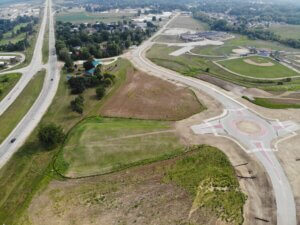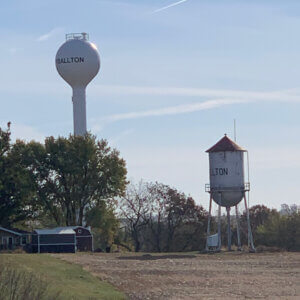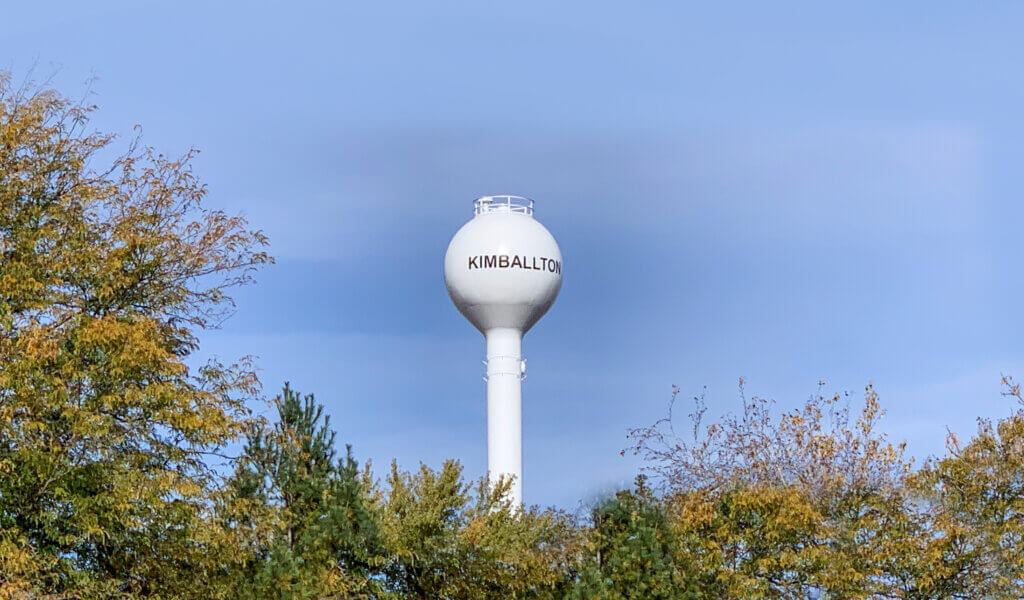
Professional Water System Study Uncovers Trouble Spots
The western Iowa town of Kimballton is the quintessential rural community that faced the familiar challenge of an aging water infrastructure system needing rehabilitation and upgrades. However, with the community’s slowly declining population and many residents on a fixed income, limited resources were available to pay for costly repairs or maintenance of the failing drinking water system.
City leaders recognized that a professional engineering study would identify any necessary water system improvements and help establish a budget for financing those improvements. The team from Snyder & Associates was brought in to create this report, and it was discovered that in addition to aged infrastructure, substantial issues with water pressure, fire-flow capabilities, and water storage capacity also existed.
Holistic Water System Improvements
Although many portions of Kimballton’s water supply system were first installed in the 1920s, the community didn’t have a history of water main breaks and considered the system fair. However, the older segments of the system were now over 90 years old and well past their original design life.
During preliminary design conversations, our team raised concerns that if improvements were made to boost the system’s operating pressure, the water mains in those areas could start experiencing increased failures due to the higher pressures. Naturally, these discussions led to further concerns about future leaks creating pathways for contaminants to enter the distribution system. As a result of these critical consultations, our experts were contracted to update the remaining pieces of the community’s water system and treatment facilities.
Water Main Replacement Leads Upgrade Process
Phase One of the project called for replacing the existing water mains and making targeted improvements to the water treatment plant. The water main upgrades consisted of constructing new mains running adjacent to the existing main through a sequence of replacement projects that minimized the disruptions to the system. Approximately 9,900 feet of water main were replaced, including replacing or installing associated hydrants and valves. Once the project was finalized, water services were connected to the new water main and the old water main was abandoned.
Targeted Water Treatment Plant Improvements
Thanks to the community’s maintenance and upkeep program, the overall condition of the water treatment system was pretty good. One exception to this was the condition of the Ion-Exchange Silicate Chemical (salt) storage facility. The Iowa Department of Natural Resources (DNR) noted in its May 2015 Sanitary Survey that the wooden salt storage structure was old and unsanitary. The recommended standard for waterworks requires that salt-dissolving brine and wet salt storage tanks be covered and corrosion-resistant. Per these recommendations, a new salt storage facility was added to the design plans, which included a tank-based brine generation system and new brine pumps, piping, and controls.
In addition to the brine facility upgrades, the aeration tower, detention tank, pressure filters, and chemical injection equipment were upgraded to current DNR standards. While these facilities still functioned appropriately and provided safe drinking water, it was determined that they would become a more significant concern down the road. Therefore, including them in the current project substantially increased the grant possibilities.
New Standby Power Source Meets Code Requirements
The final item in the comprehensive water system improvements was the addition of a reliable backup power source. Recently, the existing generator unit had become outdated and could not be properly maintained. This left the community without emergency standby power for the water treatment plant and well pumps. The Iowa DNR standard for water treatment facilities requires dedicated standby power to treat and pump water to the distribution system to meet average daily demand during an outage.
A new generator was installed at the existing water plant site and connected to the existing plant’s power supply through a new transfer switch and electrical panel. This generator will supply enough capacity to start up and run the water treatment system, including the aerator, chemical feed system, detention tank/high service pump, scour compressor, building lighting, and HVAC system. An additional portable generator was slated to be purchased to start up and run any of the existing well pumps, as necessary.
Improving Water Storage Capacity, Phase Two Upgrades

Kimballton’s new water tower is standing next to its predecessor.
With the water system now able to handle added pressures and capacity, our engineers focused on designing a new water tower for the community. The elevated water storage tank was constructed in the 1920s and exceeded its intended design life. Concern for its continued use as a storage tank arose due to an inadequate seal around the roof, resulting in debris and contaminants gaining entry and creating unsanitary conditions. This posed an apparent health and safety risk to the water supply from the contaminants and the reduction in residual chlorine distributed to the system due to the tank’s high free chlorine demand.
Additionally, the tank’s atypically low elevation proved to be directly associated with the low system pressure found in the upper portion of the town. Before the city expanded, the initial tank design likely relied significantly on the site’s higher ground elevation for static head pressure. In the intervening years, town development had extended up a nearby hill around the tower’s base. The new structure would need adequate height to provide the necessary pressure to the higher end of town.
Water Storage Alternatives Explored
Four alternatives for new water storage were evaluated based on average daily flows and commonly available tank styles for the design capacity. These options consisted of a 50,000-gallon or 100,000-gallon leg-supported tank and a 50,000-gallon or 100,000-gallon pedestal-supported tank. After discussing community needs and future planning, it was determined the best fit would be a 50,000-gallon pedestal-supported structure.
Determining the location was the next step, with capacity and structure type resolved. Through town records and conversations with community leaders, a site just west of the existing structure was selected. This location is near the highest elevation in town, taking advantage of the natural height and minimizing the tower’s constructed height. The new tower’s design is approximately 65 feet taller than its predecessor, which stood nearly 50 feet tall. When completed, this additional height will raise water pressures in the area by approximately 28 psi and will substantially increase the community’s pressure for the foreseeable future.
Securing Vital Funding Assistance
With an estimated price tag of $4,061,000 to make all the necessary improvements, the town needed a comprehensive funding solution to help make the water system improvements affordable for its residents. Several loan and grant options from various sources were evaluated, with a United States Department of Agriculture (USDA) loan and grant and a Community Development Block Grant (CDBG) ultimately being the best fit to meet Kimballton’s needs. These funding sources provided the community with over $4,000,000 to establish its new water system.
Without the grant funding, financing for all of Kimballton’s water system projects would have required raising the average monthly user fee by a whopping 350%, from $16 to $72 per month. Thanks to our expert’s help, that cost was substantially reduced. Today, residents enjoy high-quality water through a new and reliable distribution system that can serve the community for many generations.


